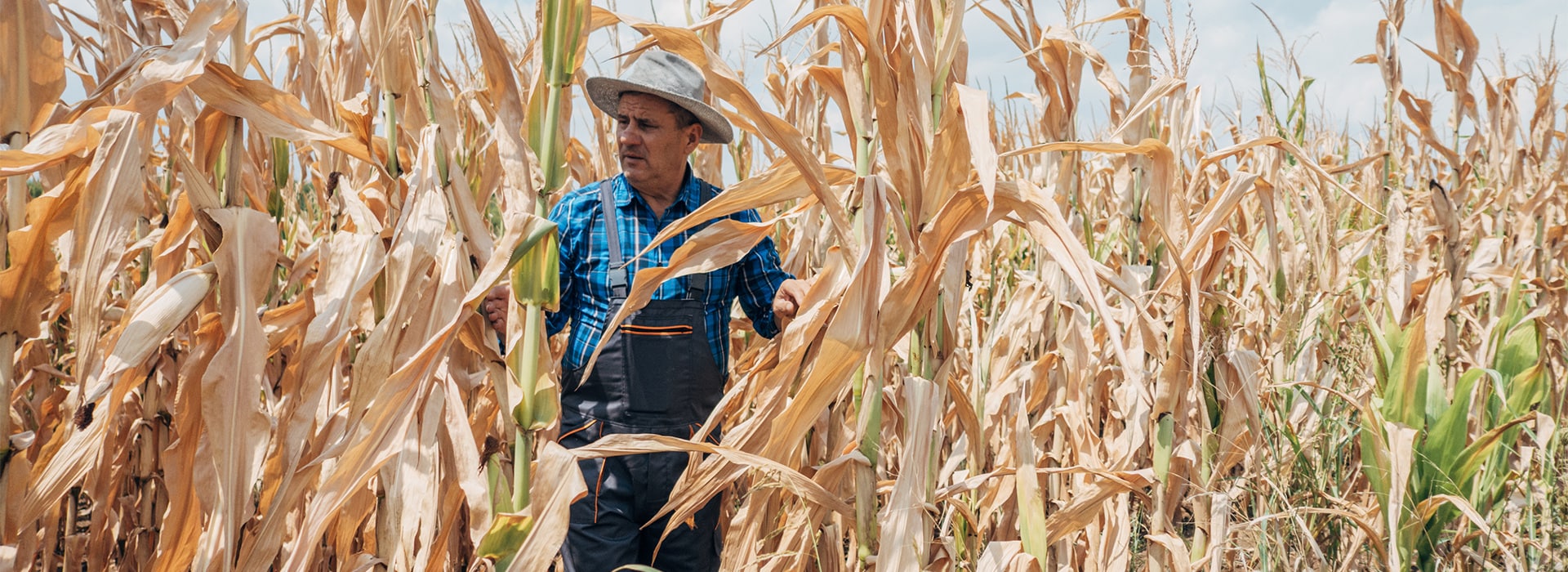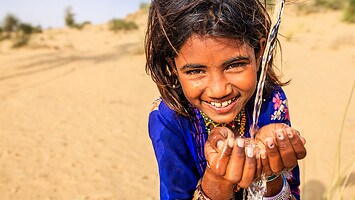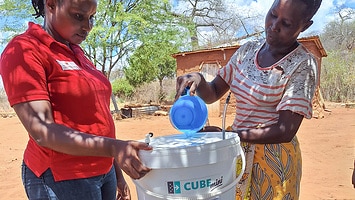Megatrend: Water Responsibility
UN Water Report: By 2050, 5 billion people worldwide will be threatened by water scarcity.
This article feautures
Water is a scarce resource in many regions of the world. This applies not only to countries in Asia and Africa but increasingly also to Europe and the USA.
According to estimates by the World Health Organization (WHO) and the United Nations Children’s Fund (UNICEF), around 785 million people currently suffer from acute water scarcity – and the trend is rising. They lack access to basic drinking water and sanitation facilities. Especially in the rapidly growing megacities of emerging countries, water supply and wastewater disposal represent substantial challenges.
That's why Wilo takes over water responsibility – today and tomorrow.

Water – a precious resource
Access to water determines the socio-economic development of a country. Every person and every economy needs water to survive. If the already scarce access to water is further restricted, serious consequences threaten. Water scarcity, caused by overuse or pollution, leads to loss of prosperity—and, in the worst case, to social tensions.
Why is there water scarcity?
The “blue planet” Earth is covered by 71 percent water. 97 percent of this is saltwater in oceans and seas, which is only limitedly usable for humans. This leaves just under three percent of drinkable freshwater, for example in lakes and rivers. A large part is also locked up in glaciers and permanent snow and ice cover. In short: The usable freshwater resources on Earth are very limited and unevenly distributed.
Climate change exacerbates this problem: Global warming increasingly leads to extreme weather events such as heatwaves and droughts. Regions already under water stress are especially affected. They come under additional pressure because reliable water supply can no longer be guaranteed. Industrialized countries are affected just as much as emerging or developing countries.
“About 70 percent of global water consumption is for agriculture. That means: no water, no food.”
Wasserknappheit nimmt weltweit zu
Already today, 2.2 billion people worldwide do not have regular access to clean water. Additionally, 4.2 billion people—more than 55 percent of the world’s population—only have inadequate sanitation facilities. The consequence of poor hygiene and contaminated drinking water: diseases, epidemics, and high mortality rates. For this reason, safe water plays a crucial role in controlling diseases and is one of the key foundations for social prosperity. Not least for this reason, clean water and sanitation are essential components of the United Nations’ Sustainable Development Goals.
While the list of countries suffering from water shortages grows ever longer, water consumption is rising. The reasons are not only industrialization but especially strong population growth. Today, over eight billion people live on Earth and consume six times more water than the roughly two billion people who lived on our planet 100 years ago. According to United Nations projections, by 2050, more than five billion people will be threatened by water scarcity.
The consequences of water scarcity
If little or no water is available, this inevitably affects a country’s food supply. According to the United Nations, around 828 million people were affected by hunger worldwide in 2021 - especially people living in dry regions.
Farmers in these regions face particularly big challenges: They must grow food with little water and poor soil. But due to increasing water scarcity, the arable land on which this is economically feasible shrinks. Additionally, many agricultural irrigation systems are inefficient, causing them to consume more water than necessary or even lose water in the soil.
What can be done against water scarcity?
Water is a human right, and access to safe drinking water should not be a privilege. That is why the Wilo Group develops solutions that reliably supply people with this precious resource. Worldwide, we help ensure water supply, treatment, and transport. In this way, we actively combat water scarcity.

Facilitating access to clean water
Our goal: By 2025, we want to provide better access to clean water for 100 million people. This supports countries in achieving the Paris Climate Agreement, which stipulates that by 2030, everyone should have access to clean drinking water and sanitation facilities. The agreement also calls for greater consideration of water’s importance in climate policy. Sustainable water management helps conserve resources and enables effective adaptation to climate change. We believe that everyone can contribute – individually, nationally, or corporately. More than ever, sustainable solutions are needed today to successfully counter water scarcity.
Wilo's water responsibility

Water scarcity has far-reaching consequences—not only for people but also for the environment and the economy. Droughts and heatwaves have become daily news topics. To meet the challenges of water scarcity, innovative solutions are necessary. Highly efficient water management can provide people with access to sufficient water and secure food supply. Learn more about our solutions for successful water management and Wilo's water responsibilty.











